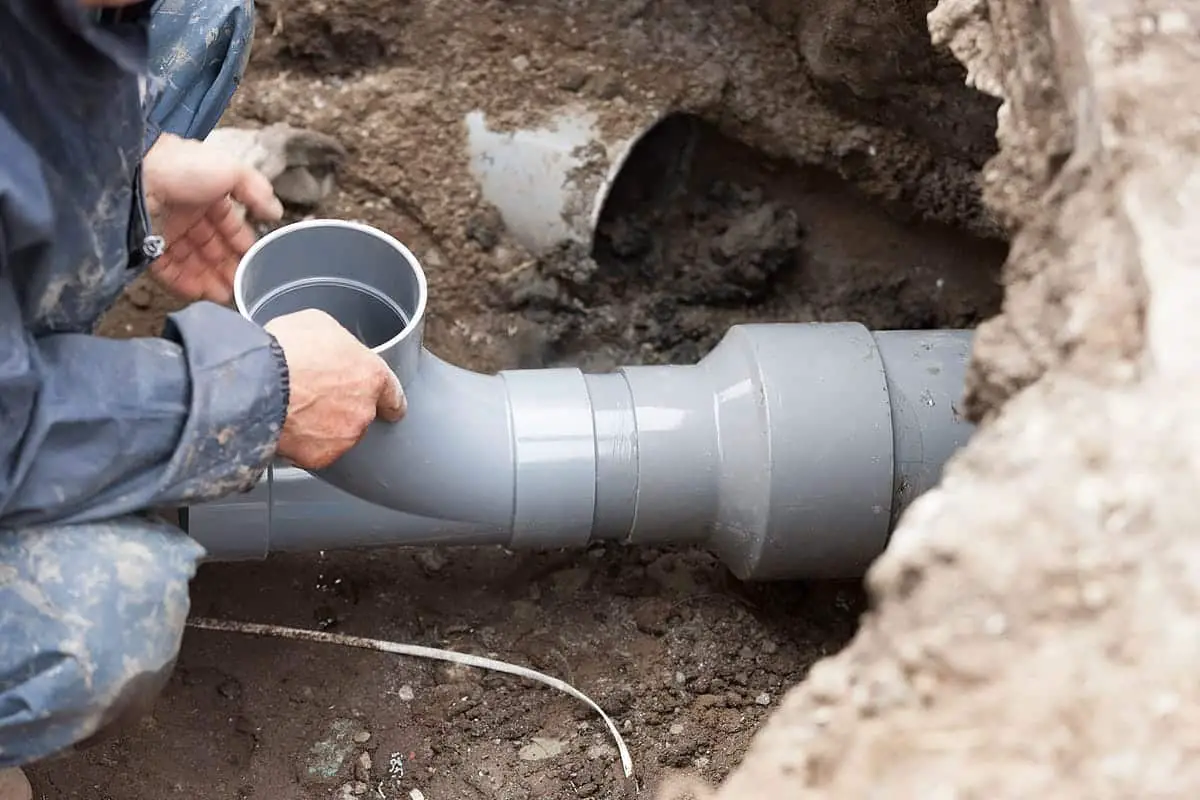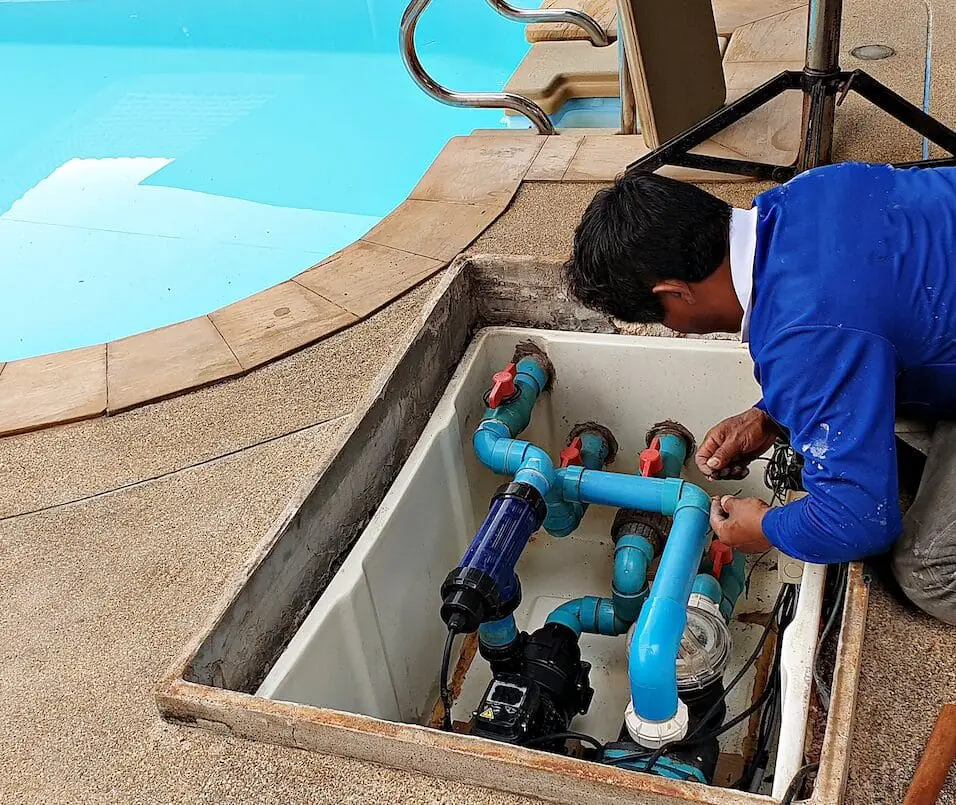How Much Slope For Plumbing Drains
Introduction
How Much Slope For Plumbing Drains: Drainage is an important part of any plumbing system because it makes sure that wastewater flows smoothly away from our houses and buildings. The slope or gradient of a plumbing drain is a major factor in its performance. The slope helps the drainage system last. It prevents system clogging, backing up, and damage.
The recommended slope for plumbing drains is generally 1/4 inch per foot, also known as a 2% grade. This means that for every foot of horizontal distance covered by the drain pipe, it should drop by 1/4 inch in elevation. Such a slight but consistent decline facilitates the effortless movement of wastewater through the pipes, directing it toward the sewer or septic plumbing system.
You can’t say enough about how important it is to keep the right slope. If a sink doesn’t have enough slope, water may stay still, where solids can build up and cause blockages over time. This could lead to annoying problems, which could mean having to pay a lot of money to fix. On the other hand, a hill that is too steep could make the water flow too quickly, which could wash away solids and leave them stuck in the pipes. Additionally, this can cause clogs and poor ventilation.

What Is The Minimum Slope For A Shower Drain Pipe?
The plumbing code requires stall shower floors to slope 1/4 inch per foot to drain water.
Installation of a shower in a home or commercial location requires consideration of the minimum drain pipe slope. To avoid water damage, mildew, and mold growth in the shower, proper drainage is necessary. Shower drain pipe slope should be 1/4 inch per foot (2% grade).
The drain pipe should descend 1/4 inch for every foot of horizontal distance. This gradual slope helps shower water flow to the drain, removing soap residue, hair, and debris.
A steeper drain slope may cause water to run too quickly, splashing and fleeing the shower. However, a flatter slope may slow water drainage, causing stagnant water, slick surfaces, and structural damage.
Achieving the minimum slope needs careful planning and installation. To achieve the desired slope, the shower drain must be carefully placed during construction or renovation. Adjusting the subfloor or utilizing shims may cause the decline. To achieve a watertight seal and prevent leaks, use quality materials and industry best practices when connecting the shower drain to the waste pipe system.
How Deep Should Drainage Pipes Be Buried?
About 18 inches deep
Dig a trench from the place in your yard that needs drainage to your chosen outlet. Check for underground utility lines and pipes before digging. The trench should be about 18 inches deep and 9 to 12 inches wide.
Type, location, and purpose dictate drainage pipe burial depth. Pipe burial depth reduces freezing and optimizes wastewater or stormwater flow. Drainage pipes should be buried 1.5–3 feet.
Local building codes determine the minimum drainage pipe burial depth for residential plumbing and sewage systems. These standards safeguard pipes from vehicle traffic, landscaping equipment, and soil shifts. The minimal depth is 1.5 to 2 feet in most regions. In areas with cold ground, deeper burial may be needed to prevent pipes from freezing and breaking.
Drainage pipe depth should be 2.5 to 3 feet or greater in freezing zones. A deeper burial keeps pipes below the frost level, where the ground does not freeze in winter. Burial below the frost level reduces the risk of pipes freezing and breaking due to expanding ice.
Do You Need Gravel Around Solid Drain Pipe?
Smooth-wall pipes drain quickly and can be unclogged with a snake.
Gravel around solid drain pipes depends on use and drainage system.
French Drains
Subsurface draining uses French drains to remove water. These geotextile-wrapped or gravel-surrounded drains have holes. Gravel filters water entering the pipe and prevents dirt from clogging the drainage system. And in this case, gravel is necessary for the French sink to work right.
Curtain Drains
Curtain drains are similar to French drains and are used to intercept and redirect surface water. Like French drains, they typically involve a perforated pipe surrounded by gravel. The gravel helps maintain a clear path for water to enter the pipe, preventing clogs and ensuring efficient drainage.
Solid Drain Pipes
Solid drain pipes are typically used for conveying water from one point to another in an underground system. Unlike French drains or curtain drains, solid pipes do not have perforations or holes to allow water to enter from the surrounding soil. Therefore, using gravel around a solid drain pipe may not be necessary for drainage purposes.
Does A Drainage Pipe Need To Be Continuously Sloped?
The unsloped area will accumulate water and may collapse. For natural and simple flow, horizontal drainage pipes should have 1% slope, and for lengths above 10 feet, 2.5%.
An ideal drainage pipe slopes steadily from its beginning point to where water is discharged. A constant slope helps gravity circulate water through the pipe, reducing pooling and improving drainage.
However, in reality, achieving a completely continuous slope might not always be feasible due to various constraints, such as:
Landscape and Terrain
The natural topography and landscape of the area might not allow for a perfectly continuous slope throughout the entire drainage system. There may be dips, valleys, or obstructions that hinder the creation of an uninterrupted slope.
Existing Infrastructure
In urban areas or established properties, there might be pre-existing structures, utilities, or other underground installations that limit the ability to create a continuous slope for new drainage pipes.
Grading and Elevation Changes
In some cases, the site’s grading and elevation changes might require the installation of additional components, like sump pumps or catch basins, to address changes in slope and ensure proper drainage.
Underground Utilities
The presence of underground utilities, such as gas lines, electrical cables, or water pipes, can affect the layout and placement of drainage pipes, leading to variations in the slope.
Local Building Code
Based on the application, soil conditions, and water volume, building codes may specify drainage pipe minimum slopes.
What Happens If Drain Slope Is Too Steep?
Water forced around clogged pipes due to poor slope erodes soil and bedding.
A slope is necessary to allow water to flow, but a severe slope might damage the drainage system. When the drain slope is too steep, these issues may arise:
A steep slope can create rapid drainage pipe flow. Rapid flow may not allow sediments and debris to settle, increasing pipe jams.
Pipe Erosion: Fast-moving water can erode the interior of PVC or corrugated plastic pipes. This erosion can undermine the pipe’s structure and cause leaks or failure.
Water Splashing: If water flow is too strong, it may splash out of the drainage system, damaging adjacent surroundings or making it slippery.
Water Removal: Despite appearances, a steep slope can reduce water removal efficiency. It may move too fast to drain from the surface.
What Is The Recommended Slope For Plumbing Drains?
Each foot of horizontal drain pipe should descend 1/4 inch in elevation. The slope helps wastewater flow from sinks, showers, bathtubs, and toilets to the main sewage line or septic system.
Slope maintenance is important for numerous reasons:
Effective Drainage: The slope helps gravity move wastewater through pipes, preventing water from accumulating and speeding up fixture removal.
Preventing Clogs: Adequate slope prevents dirt, hair, and other substances from clogging drain pipes.
Proper Venting: The slope allows air to circulate through the drainage system, preventing vacuum conditions that could impair drainage.
Minimizing Odors: An efficient drain slope eliminates stagnant water, which can cause plumbing system odors.
Maintaining Health and Hygiene: Proper drainage prevents water blockages and leaks, keeping homes and workplaces clean.
some variations may exist depending on specific factors
Fixture Type: Different fixtures may have varying slope requirements. For example, a toilet drain may require a steeper slope compared to a sink drain.
Local Building Codes: Building codes may stipulate minimum slope requirements for plumbing drains in specific regions. It’s essential to comply with these codes to ensure the installation meets safety and regulatory standards.
Pipe Diameter: The diameter of the drain pipe can also influence the slope requirements. Larger pipes may have different slope guidelines to accommodate higher water volumes.
Pipe Material: The material of the drain pipe can affect the flow dynamics, which might necessitate slight adjustments to the slope.

Why Is Proper Slope Essential For Plumbing Drains?
Drain pipes are built at an angle to allow water to flow by gravity. Here are the major reasons plumbing drains need the right slope:
Effective Drainage: Plumbing drains remove wastewater from sinks, showers, bathtubs, and toilets. Water doesn’t pool or stagnate in the plumbing system because a good slope keeps drain pipes flowing freely.
Clog Prevention: Adequate slope prevents dirt, hair, soap scum, and other solid objects from accumulating in pipes. These particles are carried away by fast, sloped water, eliminating jams and obstructions.
Minimizing Odors: Proper drainage with the right slope provides airflow through pipes and prevents stagnant water pockets.
Hygiene and Health: Effective drainage is essential for maintaining a clean and sanitary living or working space. Proper slope prevents water backups, leaks, and potential water damage, which can lead to mold growth and health hazards.
Venting Efficiency: Proper slope ensures that air can circulate through the drainage system, facilitating the proper venting of gases. Adequate venting is essential to prevent pressure imbalances, siphoning, and the accumulation of harmful gases like methane.
Are There Different Slope Requirements For Specific Plumbing Fixtures?
Different fixtures have different features and wastewater flow rates, which can change the slope needed for good draining.To prevent clogs, backups, and optimal plumbing system performance, adjust the slope to each fixture.Here is a list of popular plumbing fixtures and the slope they need:
Toilets: One of the most important parts of a water system is the toilet. Faster trash disposal demands a steeper slope.Toilet drains should be slanted 1/8 inch per foot (1% grade) to avoid debris.
Sinks: The flow rate of garbage through sinks in bathrooms and kitchens is usually slower than through toilets. Most sink drains only need a 1/4-inch-per-foot slope (2% grade), which lets water and small particles flow smoothly without moving too quickly.
Showers and bathtubs: When used, shower and bathtub drains must manage more water. For water to drain swiftly and not pool and damage these areas, a 1/4 inch per foot (2% grade) slope is recommended.
Floor Drains: Commercial and industrial floor drains handle a lot of water and debris. Floor drain slopes vary by location and purpose, but they are normally 1/8 inch to 1/4 inch per foot.
Conclusion
The slope of plumbing lines is a very important part of keeping the whole drainage system working well and lasting a long time. Most plumbers say that a slope of 1/4 inch per foot (2% grade) is best for drains. This means that the drain pipe should drop 1/4 inch in height for every foot it goes across in a straight direction. Water should quickly and easily run away from fixtures like sinks, showers, bathtubs, toilets, and floor drains and into the main sewer line or septic system if the slope is right.
Maintaining the correct slope is essential for several reasons. First and foremost, it promotes efficient drainage, preventing water from pooling, stagnating, or causing potential water damage. A good slope helps prevent clogs by carrying sediments and debris with the water.
Moreover, proper slope contributes to the ventilation of the drainage system, allowing air to circulate and preventing the accumulation of harmful gases, such as methane. It also helps minimize foul odors that might arise from stagnant water or poor ventilation.








